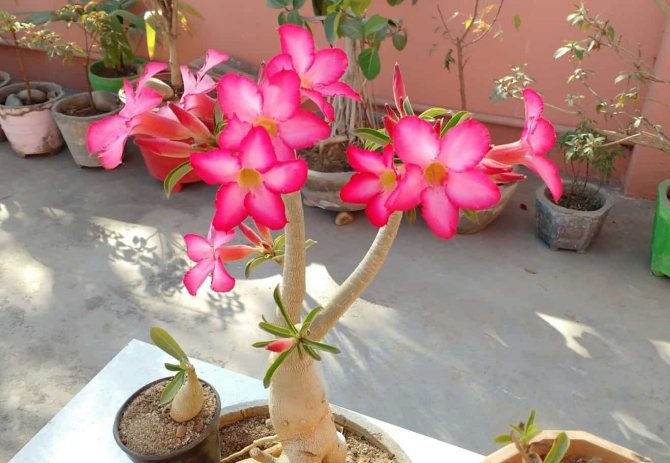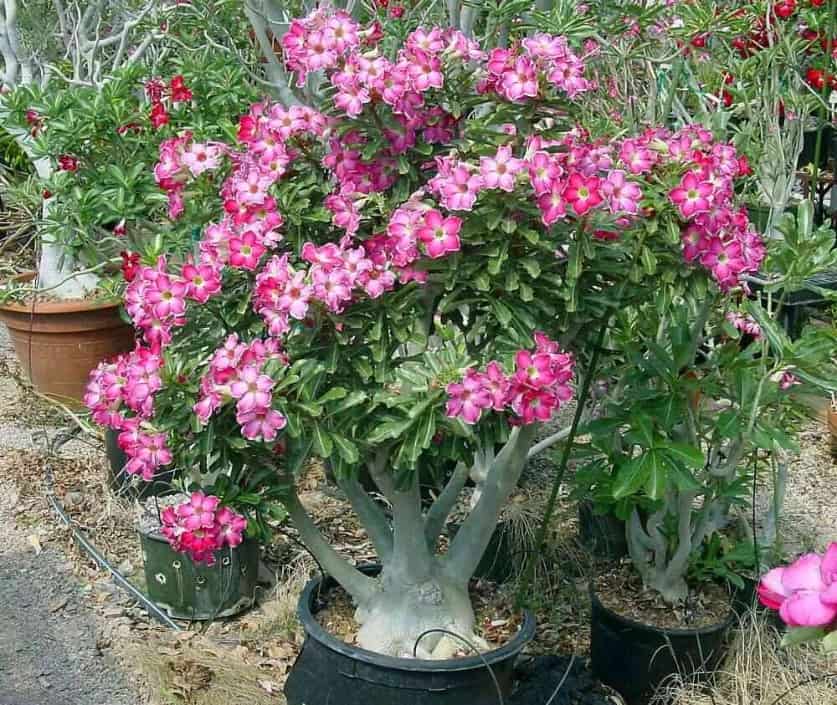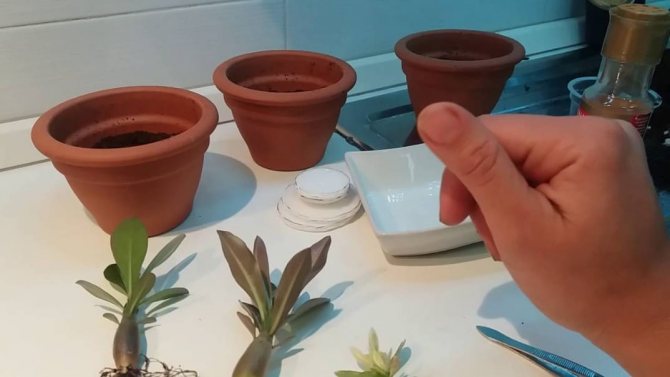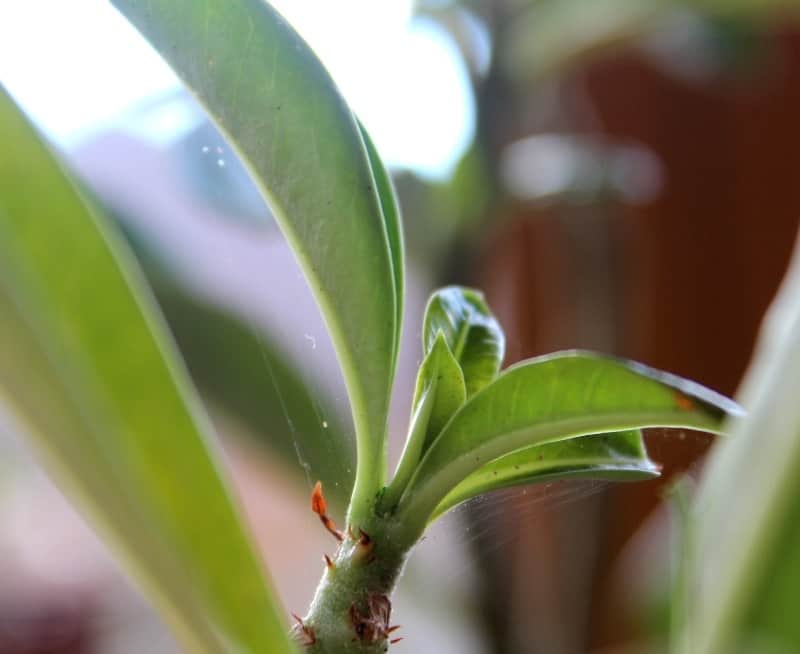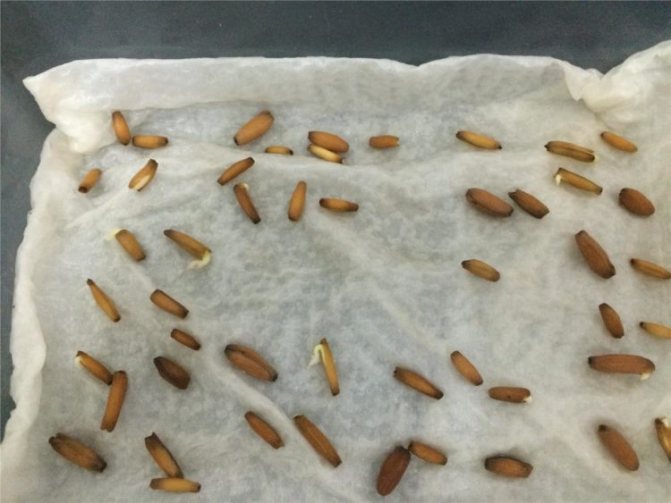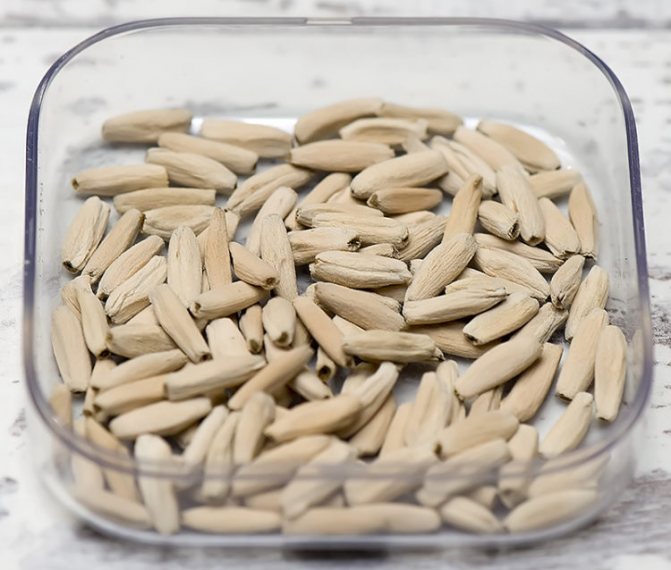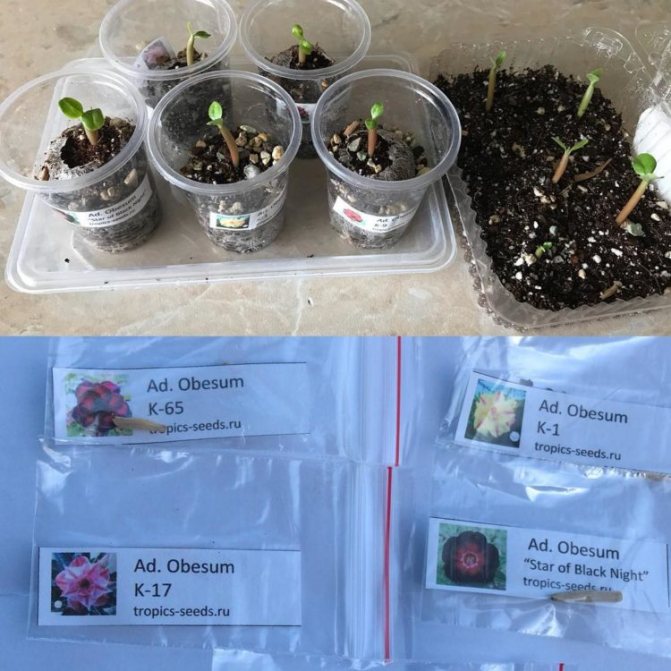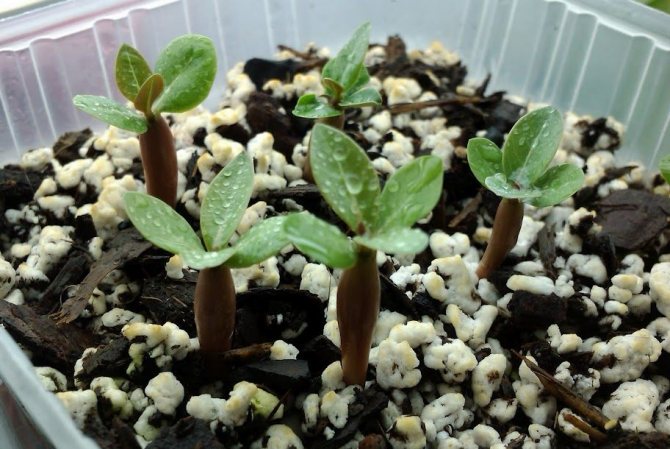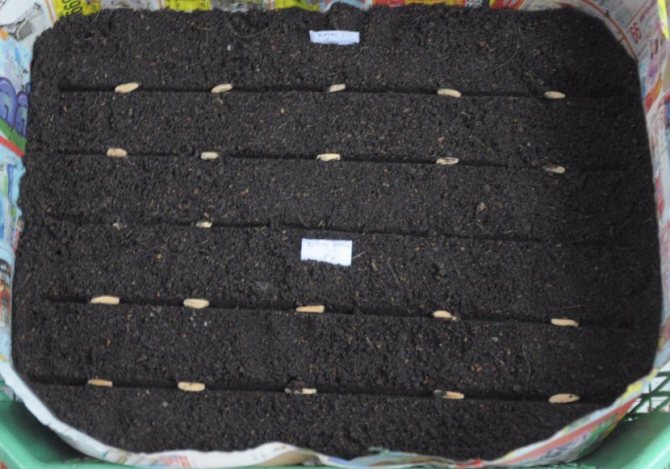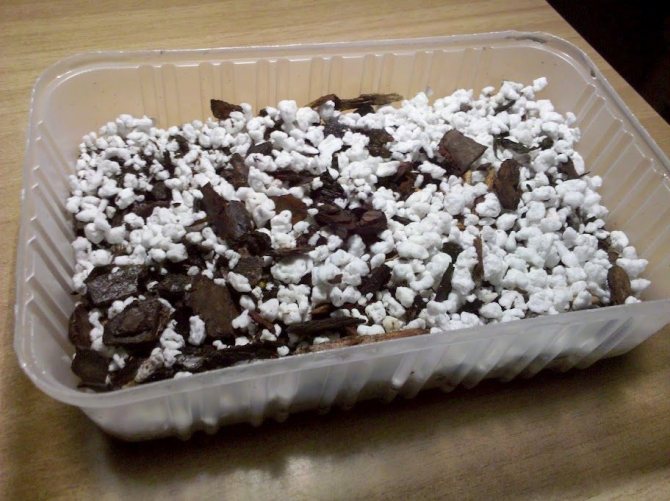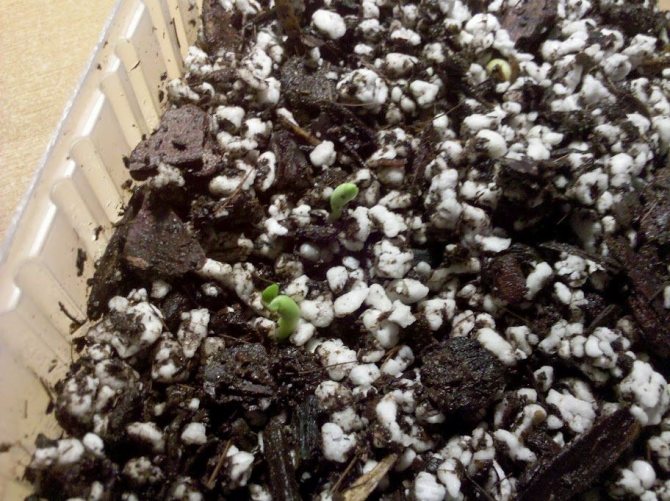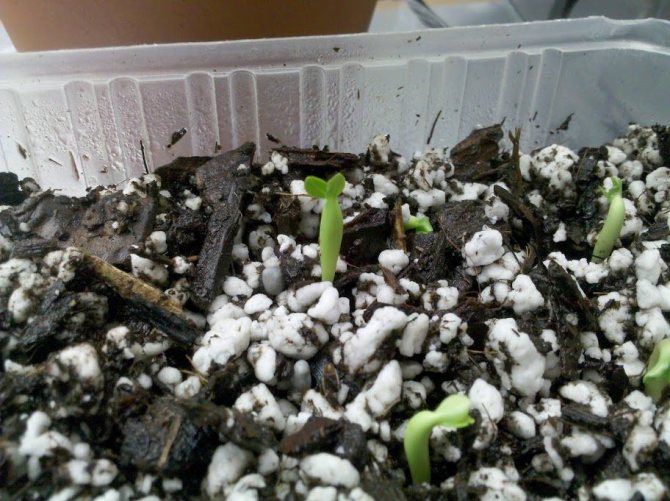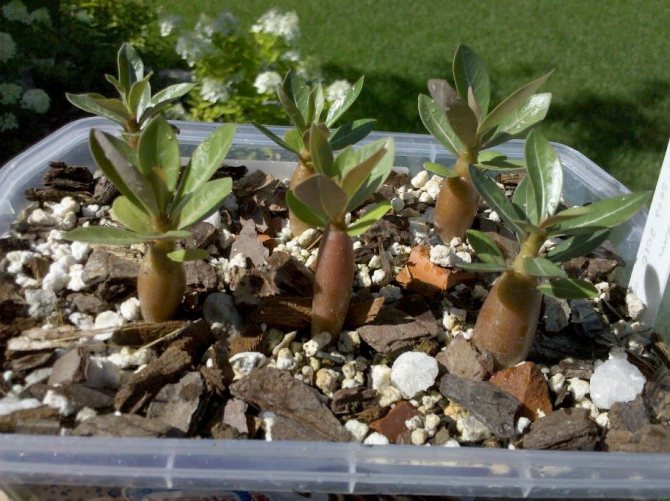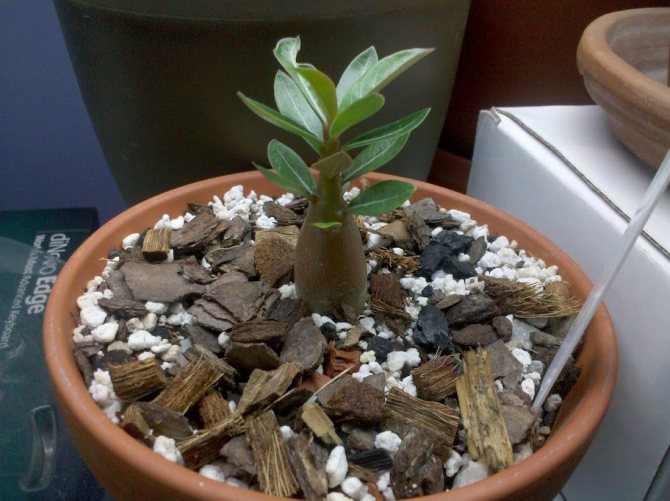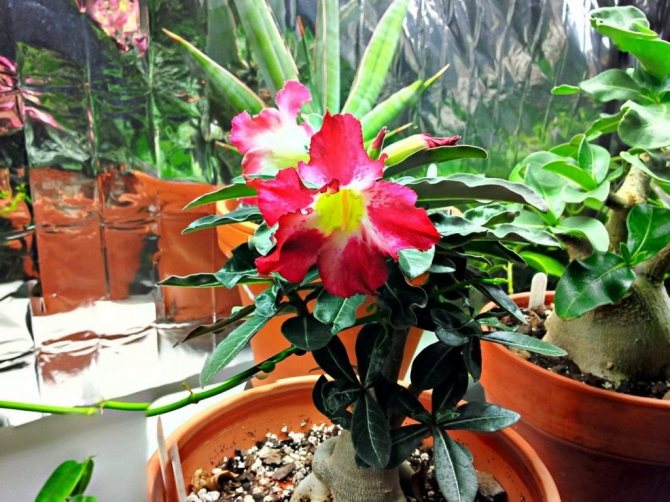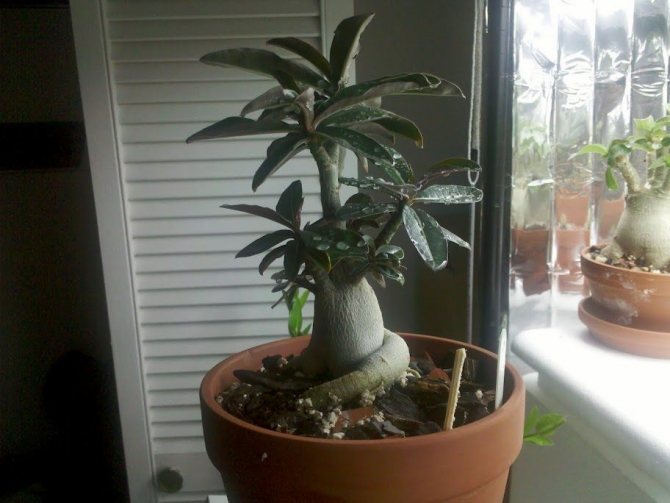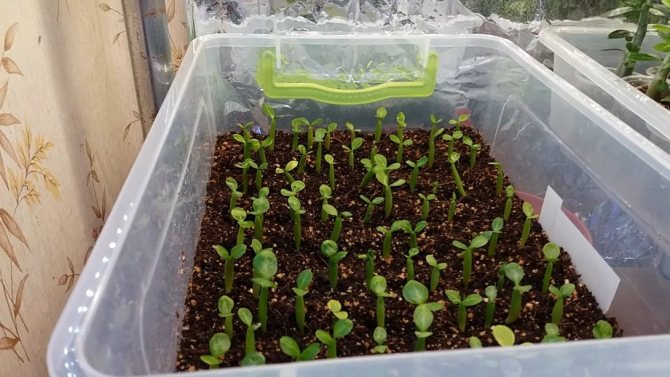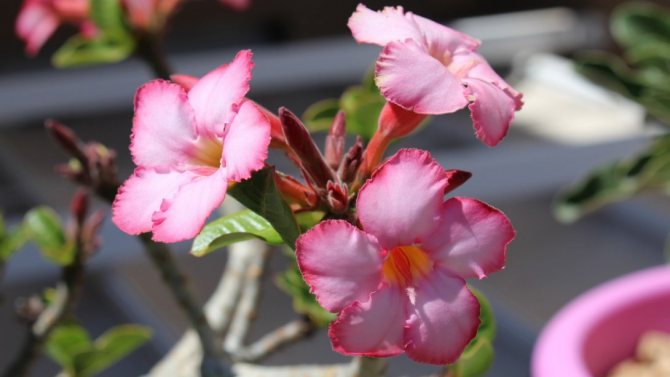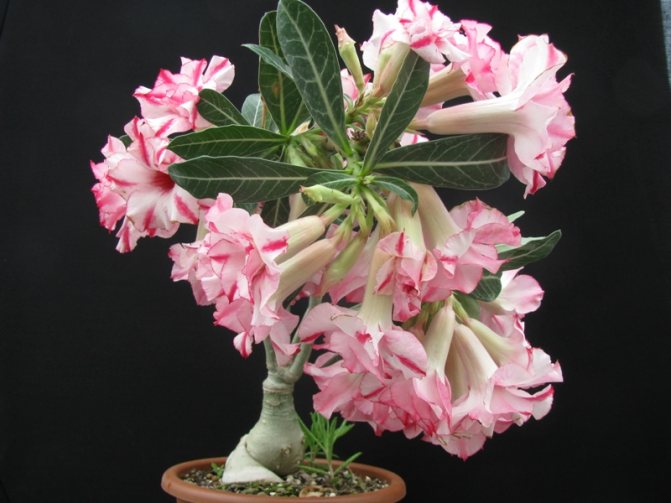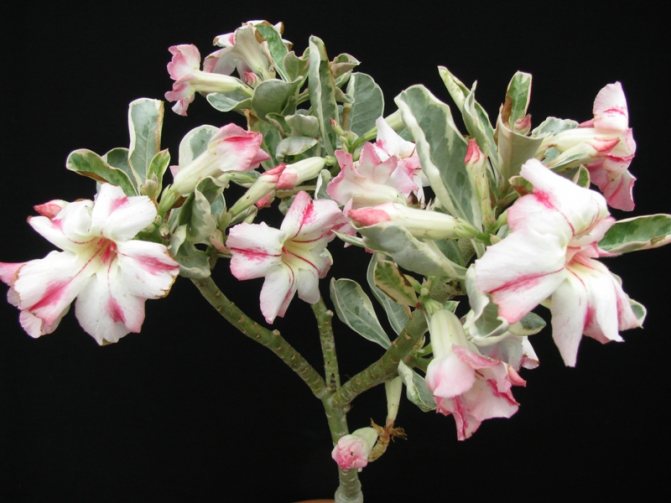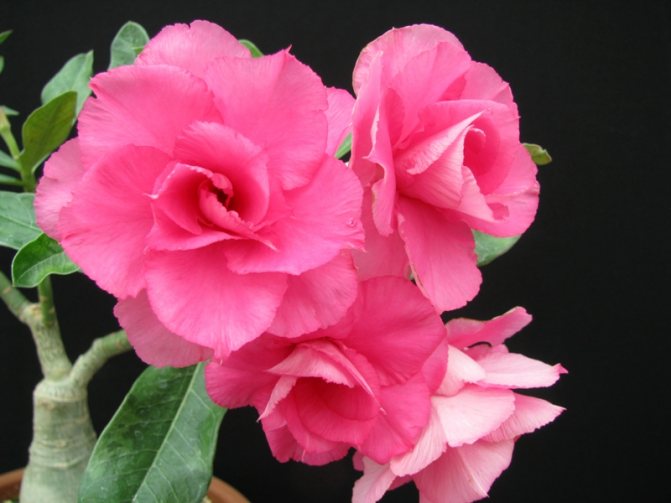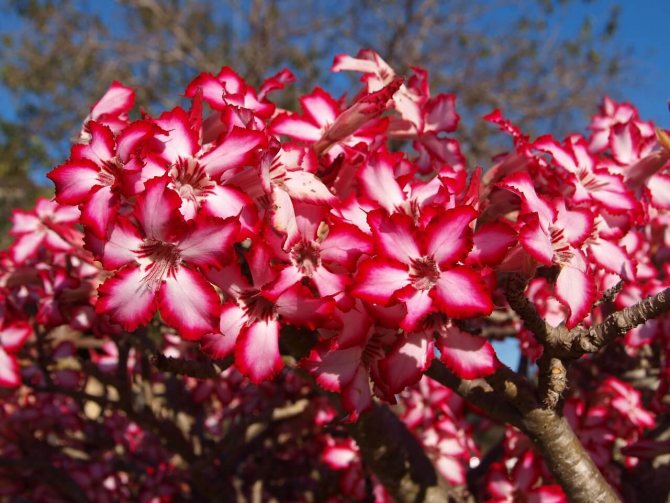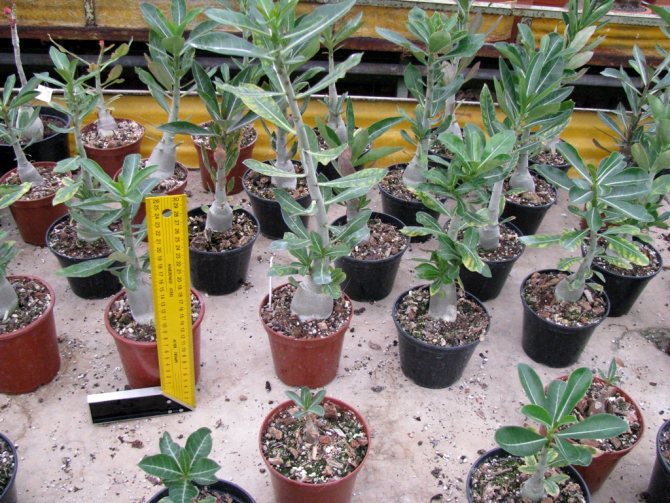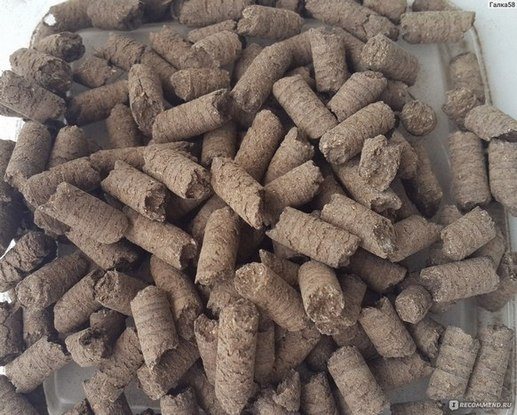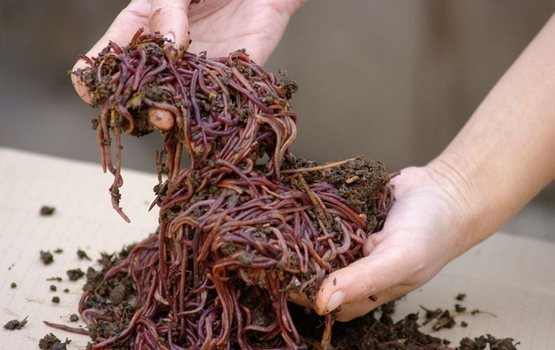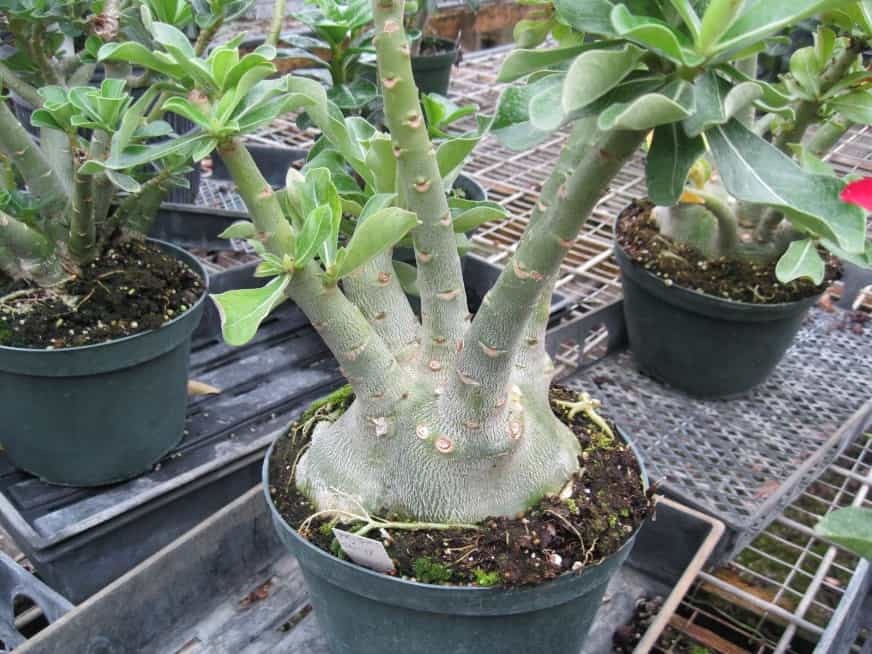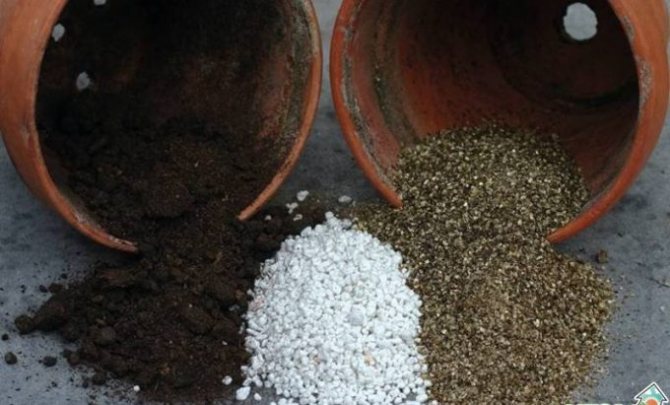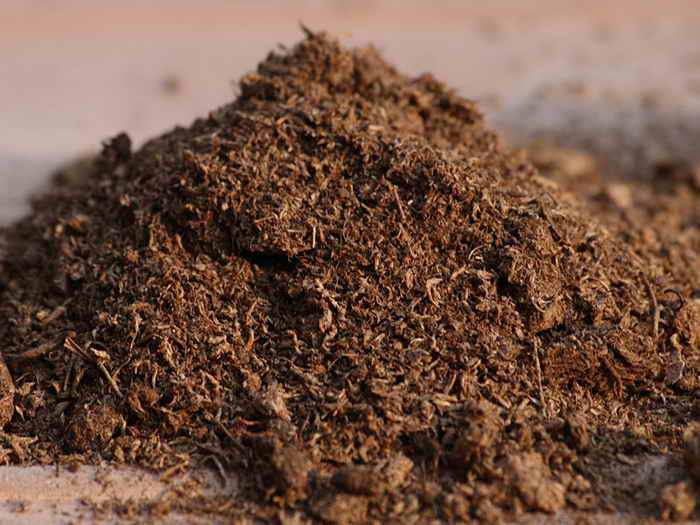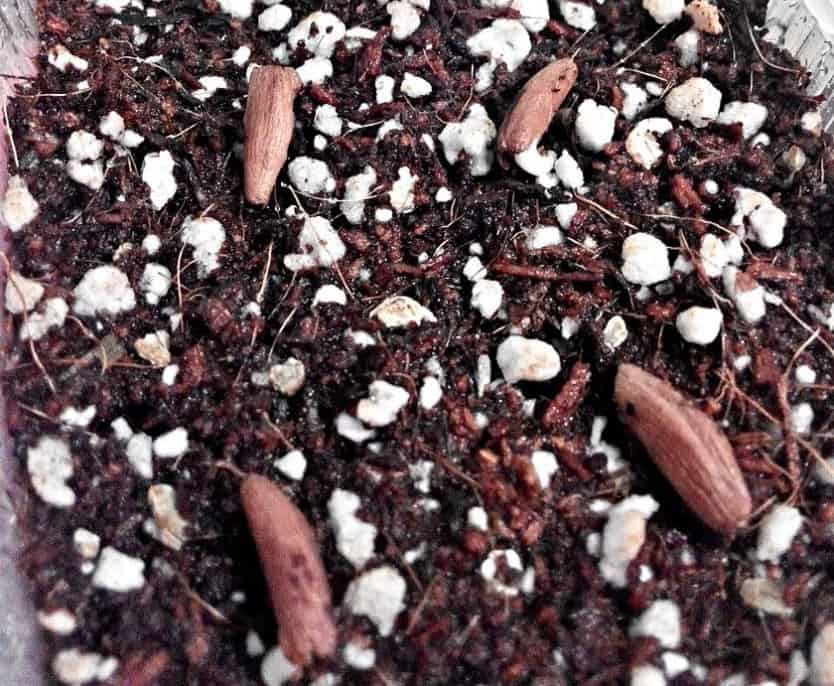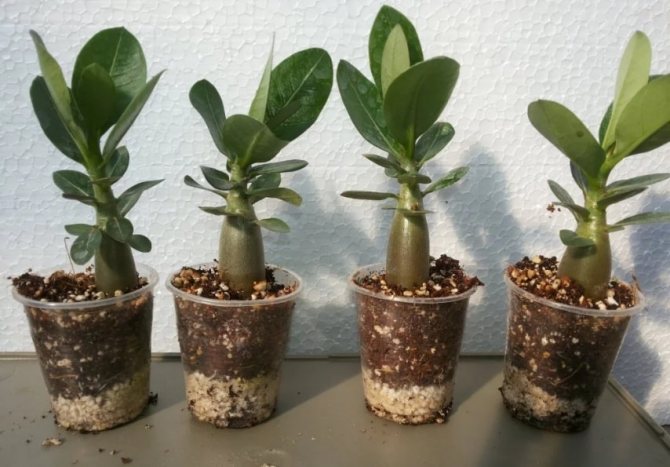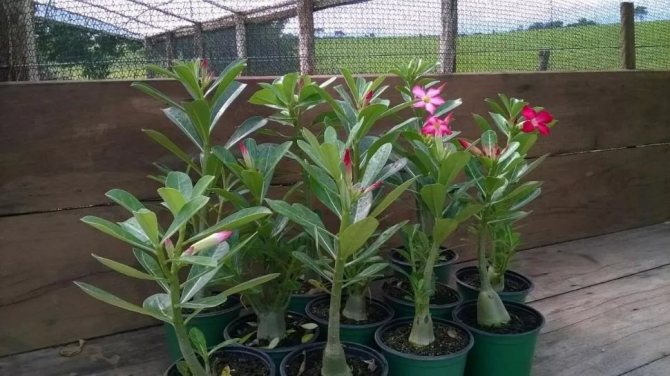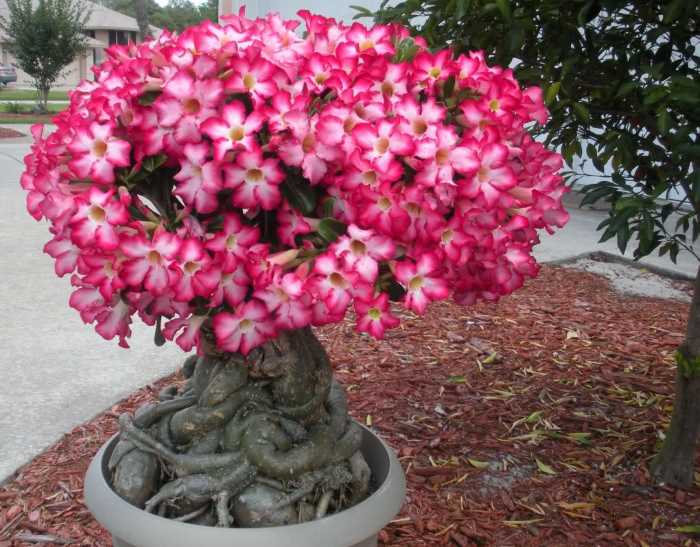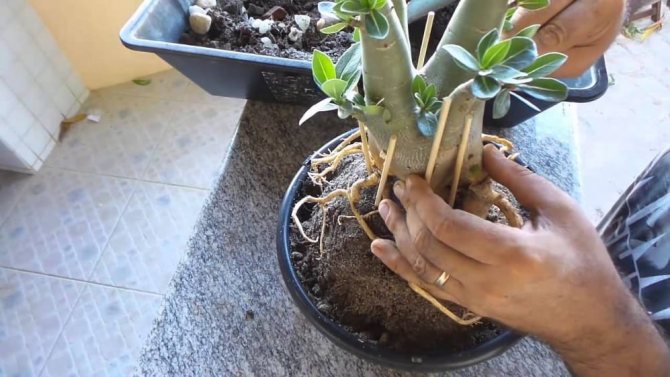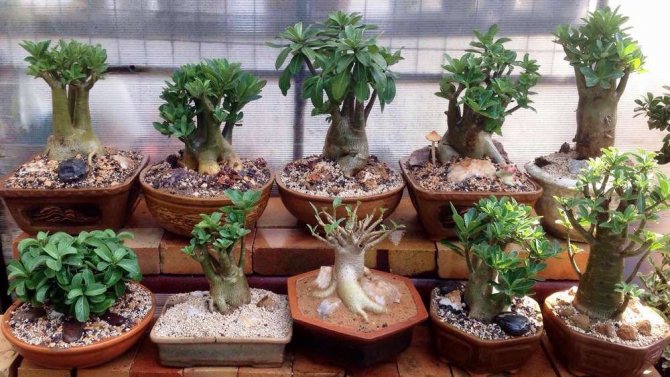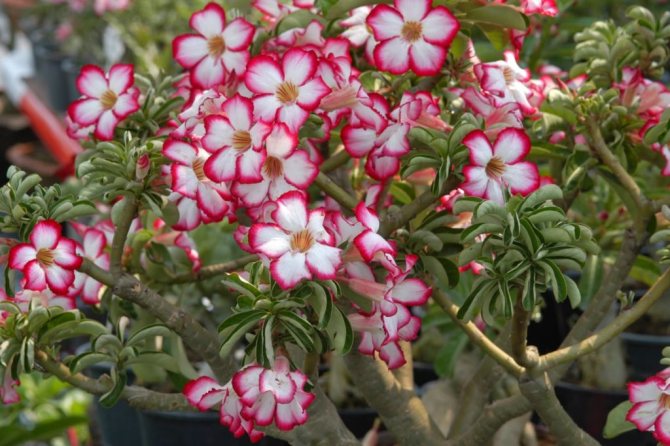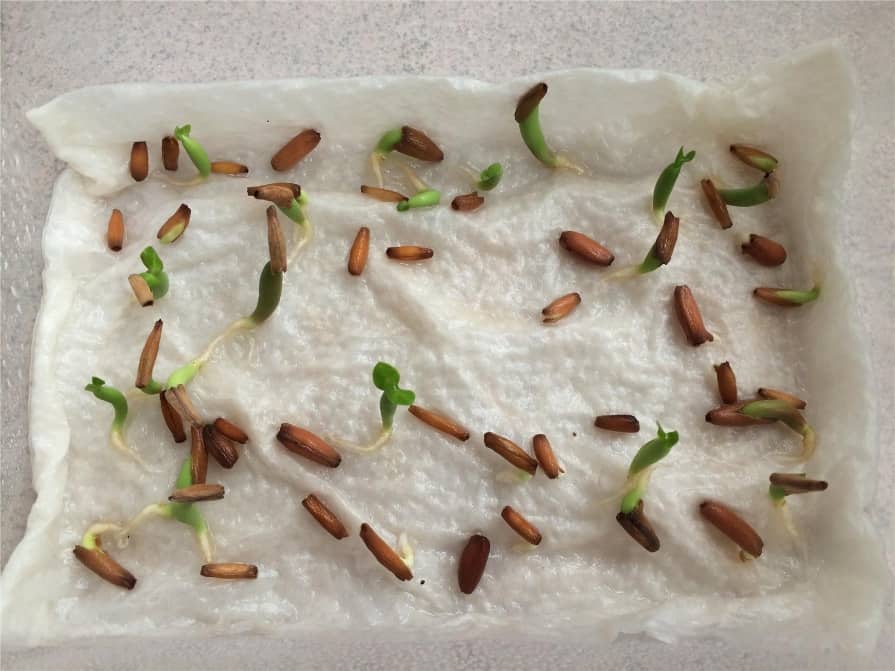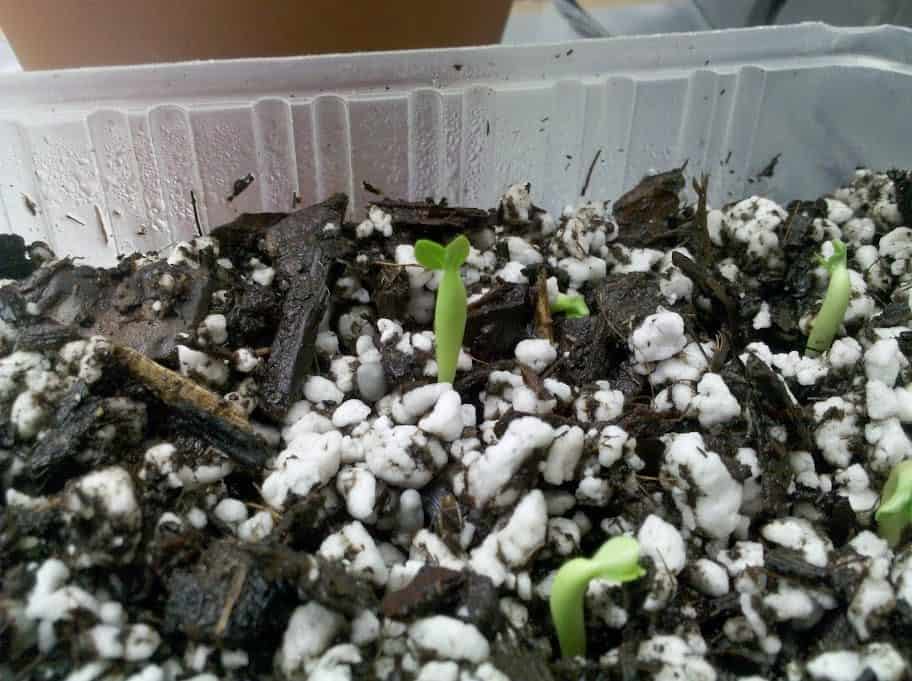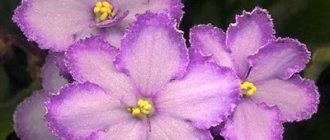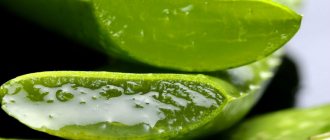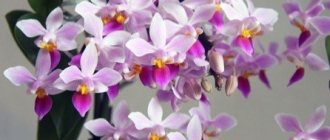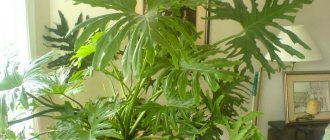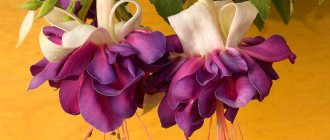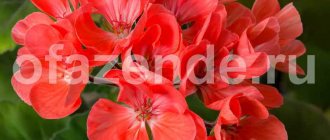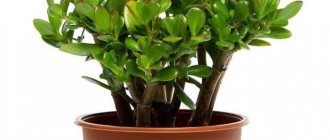Spectacular adeniums with a hypertrophied thickened stem, a small bunch of leaves and a scattering of luxurious flowers are becoming more and more popular with amateur flower growers. For all the exoticism, growing adenium from seeds at home, it turns out, is not difficult at all and even a beginner can do it.
Light brown seeds, similar to miniature tubules, open literally in three days, revealing to the world a tiny, but already rather fleshy plant. Due to the rapid germination and further active growth, adeniums can be safely recommended to the most impatient home gardeners.
Despite the seeming simplicity and quite understandable joy from the sight of the first shoots, one should not forget that adenium is a native of Africa, and in indoor conditions a special approach is needed to its seedlings.
How to grow adenium from seeds, properly organize sowing, germination and care of seedlings?
The advantages and disadvantages of this method
The advantage of reproduction of adenium by germination from seeds is the rapid growth of caudex - a thickened stem of a plant that is formed from the root system and, depending on the imagination of the owner, can take on a wide variety of forms. Adenium grown from seed immediately begins to branch extensively and grows rapidly..
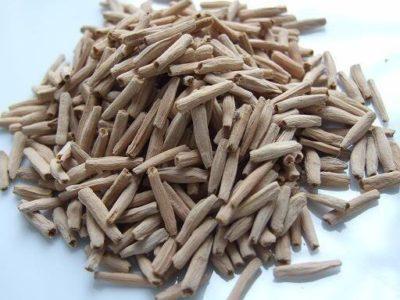
In addition, by showing imagination, from the first months of life, you can simulate the amazing shape of a pet.
But, unfortunately, getting fresh seeds is very difficult! But it is the shelf life of the planting material that affects the germination of the plant.
Therefore, buying in an online store is unsafe: you can not only purchase a variety and color different from the desired one, but also generally not get any result from your subsequent work.
It is better not to take packages on which the shelf life of seeds is several years.... Collected no earlier than a year in advance - this is the only suitable option.
We also suggest learning how to propagate adenium by cuttings from this article.
Soil preparation for growing adenium from seeds
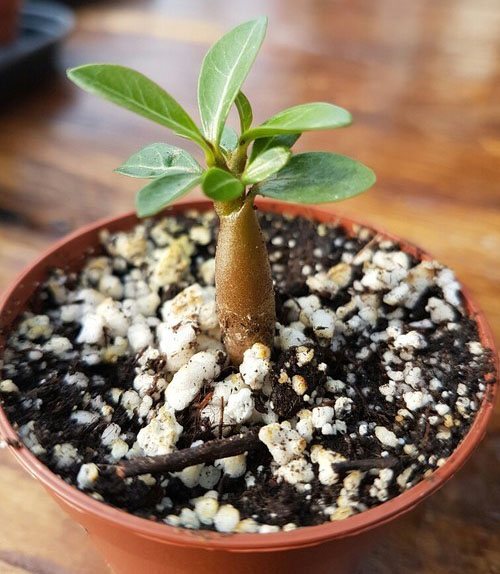

The best substrates for adenium are easily permeable to moisture and air. They are perfectly structured and do not cake after several waterings. Dense soil prevents plant growth, contributes to the accumulation of excess moisture. Therefore, during preparation for sowing, you need to carefully choose the right mixture.
Today, flower growers willingly use ready-made soils, which differ:
Soil composition for sowing
The soil for planting must be breathable and nutritious... Acidity - weak or neutral. Peat, as it is too dense and prevents the germination of the root system, is not suitable. The ideal planting mix includes:
- Coconut fiber - 50%
- Deciduous-humus soil - 25%.
- Inert baking powder (perlite or vermiculite) - 5-10%.
- Expanded clay of the finest fraction (or broken brick) - 20% (up to 3 mm).
- A handful of crushed polystyrene foam chips.
Since it is not always possible to find the first component, it can be replaced with soil for succulents. Experts recommend Kekkila, Morris Green and Greenworld Kakteenerde blends for balanced acidity and excellent root aeration.
They add crushed charcoal and coarse river sand calcined on a fire.
How to prepare the soil with your own hands?
There are several ways to prepare soil for adenium:
- Connect the following components:
- coconut substrate - 30%;
- land for cacti - 30%;
- vermiculite - 15%;
- perlite - 15%;
- charcoal - 10%.
- Mix:
- 50% universal soil;
- 15% vermiculite;
- 25% perlite;
- 10% charcoal.
- Mix these ingredients:
- coconut soil 50%;
- perlite - 30%;
- vermiculite and charcoal 10% each.
- For adult adeniums, use the following mixture:
- peat soil - 1 part;
- perlite - ½ part;
- expanded clay - 1 part;
- large brick shavings -1 part;
- coal - ½ part.
From the video you will find out what is the composition of the soil for adeniums:
How to choose and prepare seed material?
In order to avoid decay of seedlings, pre-sowing treatment of seeds is required., which will help neutralize the spores of pathogenic fungi that have fixed on the surface and support future growth.
The seeds can be soaked in distilled warm water for a couple of hours, but it is best to use a weak solution of potassium permanganate (for 30-40 minutes) or a suspension using crushed coal. This is followed by treatment with a biological or systemic fungicide (eg phytosporin). It will be useful to keep the seeds in a solution of a growth stimulant (Energin, Epin) or zircon for 2-3 hours.
Below in the photo you can see what the seeds of the adenium plant look like.
How to transplant correctly
The first plant transplant is done immediately after purchase. In commercial mixes and transport pots, the succulent does not have the opportunity to actively develop, because the soil is universal and does not contain the necessary components for the flower.
The second time, the procedure is carried out taking into account the age of the culture. Young specimens move annually, adults every 2-3 years. This approach is due to the fact that despite the slow growth from the moment of germination to 2.5 months, after that there is a sharp leap in development that lasts throughout the season.
The optimal time for the event is winter or early spring, when the tree has not yet entered the growing season.
In an emergency, the work can be postponed to the summer, but in this case it is worth completing them a month before the fall, when temperatures are characterized by a strong decrease.
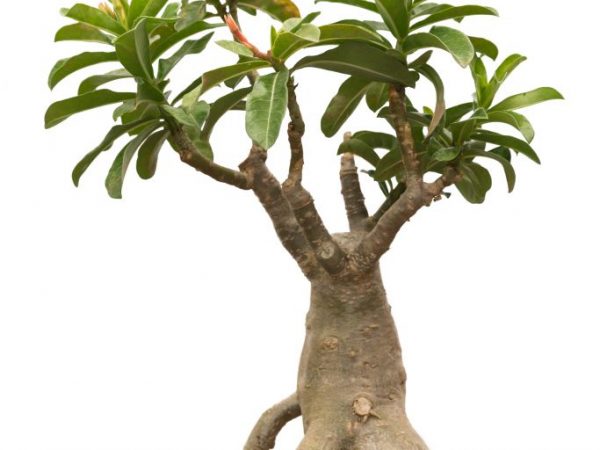

It is recommended to replant the plant in spring.
Technology:
- An earthen ball is poured abundantly a few days before the procedure, which ensures easy removal from the container.
- Holding gently by the stem and tilting the pot, they take out the plant.
- Carefully examine the root system for damage and rot. If such are found, the injured segments are trimmed, sprinkled with wood ash, slightly dried. It is also allowed to use Tiovit Jet or colloidal sulfur as a disinfectant.
- The bottom of the container is filled with drainage a few centimeters in height, a little sand is poured over it.
- Part of the soil is laid out with the expectation that the root system should be located 1-3 cm higher than in the previous container. In seedlings, the old soil is not eliminated, adult specimens are cleaned not only from the substrate, which often takes place without outside participation, but also lime traces on the rhizome.
- The plant is carefully placed, fixed with wooden skewers around the perimeter, relative to which it is supposed to create the necessary caudex shape. At the same time, the roots are straightened in the most favorable position according to the grower, the capillary roots are left intact - over time they will disappear themselves.
How to sow and germinate correctly?
When choosing between single and group seeding, it is important to remember the following:
- Sowing in one container is faster and allows plants to grow roots more vividly, but it requires a lot of space both on the windowsill and under artificial lighting lamps.
- In the second option, there are no many cups and containers, which saves space. However, such crowding leads to a weakening of the shoots: the strong begin to stretch out in anticipation of the weak, and you can miss the moment of transplanting into separate pots (2-3 months after sowing).
The consequences of a wrong choice
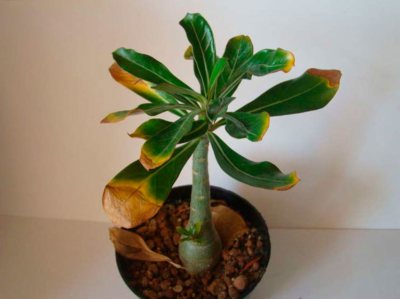

- Strong acidity of the soil or, conversely, an alkaline environment leads to tree disease (you can learn about possible problems, diseases and pests of adenium here, and from this article you will learn about the causes of desert rose diseases and methods of treatment). The plant cannot absorb nutrients and trace elements and stops developing.
- In moist and dense soil, the tree begins to rot, conditions favor the development of harmful microorganisms.
- Excessive nutritional value of the soil leads to lush foliage growth, with little or no flowering.
Adenium is an unusually beautiful plant that pleases with its flowering for a long time. The main condition for this is the choice of quality soil. Whether you buy a substrate in a store or cook it yourself, compliance with all the requirements for its composition will give you the opportunity to enjoy the view of a flowering plant all year round.
If you find an error, please select a piece of text and press Ctrl + Enter.
Step-by-step planting instructions
Planting adenium seeds is carried out in several stages.:
- A drainage layer is laid on the bottom of the selected container, on top of it - half of a moderately moistened substrate.
- The seeds are laid out flat, at a distance of 3 centimeters from each other, slightly deepened and sprinkled with the rest of the mixture 5-10 mm thick.
- The container is covered with a lid (you can use a half of a plastic bottle, a bag or cling film) and put in a well-heated place. For example, to a central heating battery or heater. A few teaspoons of water are poured into the pan.
- In the mornings and evenings, the cover is removed for half an hour of airing. Every day the soil is sprayed with a spray bottle. Drafts must not be allowed, as well as direct sunlight.
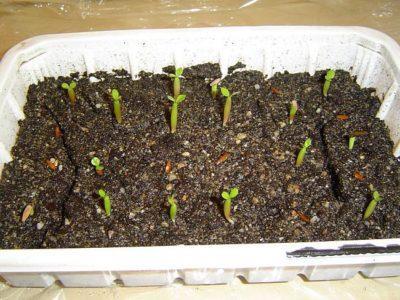

Seedlings appear within the first week, most often after 2-3 days. After the seeds have hatched, they must be illuminated with a fluorescent lamp all 24 hours a day and regularly pour water into the pan.
The backlight is gradually reduced to 18, then to 16, 14 and 12 hours a day. The bottom heating remains (you can use a heating pad, shoe dryer, any other means at hand).
- Often, the sprout comes to the surface with a shell that prevents the cotyledon leaves from opening. Such a shell must be removed, otherwise the sprout will die.
- With the appearance of the second pair of leaves, the strengthened adeniums are transplanted into pots with a diameter of 5-6 cm. Since the root of young plants develops powerful and large, the pot should be deep, classic.
How else you can sow adenium seeds is described in this video:
Can I plant outdoors?
Unfortunately, it is impossible to plant adeniums in open ground - they do not take root in the Russian climate. But you can and should take the plant out to an open balcony or garden in the summer months.
Other landless substrates
This group includes a large number of soils, but we will briefly tell you about the most popular ones. These components are more difficult to obtain than all of the previously listed ones. Therefore, it is unlikely that it will be rational to use them when compiling a soil mixture for adenium. Besides, they are all quite expensive. If you still want to, you can look for similar in stores that sell goods for bonsai.
Akadama
A special type of fired clay, which is produced only in Japan, in the province of the same name. Of the minuses: it is very expensive, it needs to be sieved before use, and it also collapses over time (after about two years).From the pros: it is a baking powder.
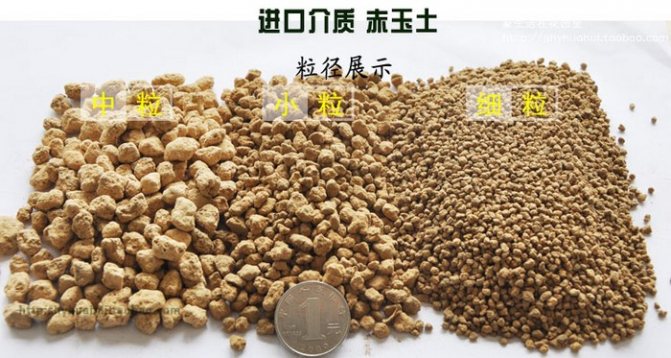

There are different breeds and factions, but we will leave this information for bonsai lovers.
Pumice
It is a soft volcanic rock with good moisture holding capacity. The porous structure perfectly stimulates the growth of small roots.
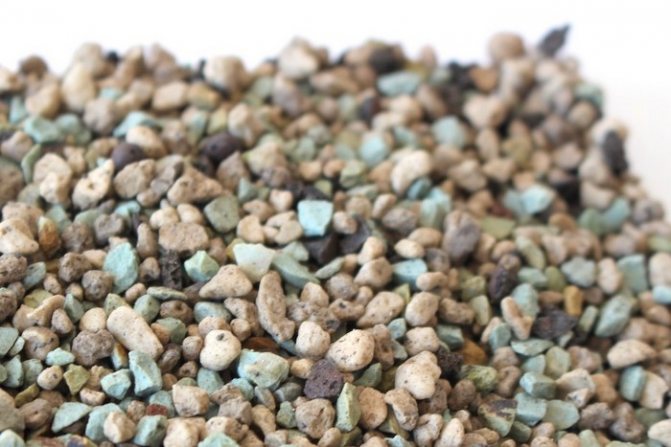

Lava
It absorbs water well and loosens the soil well. Together with the previous component, it is part of the Lechuza Pon substrate, which is easier to obtain than each of them separately.
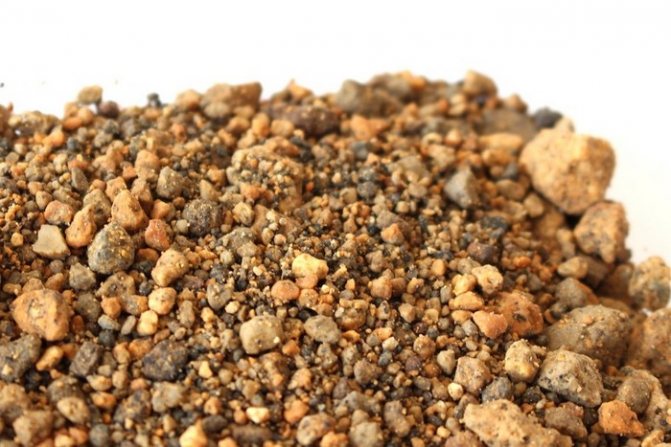

Styrofoam
If all the previous components for one reason or another did not suit you, then the old proven foam is always at hand. On the other hand, why not. He will cope with the task of making the substrate more airy and loose. But creaky, contagion.
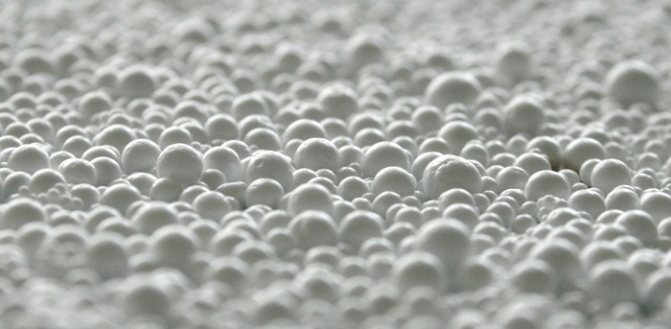

Follow-up care
- Lighting.
The plant is suitable for a south or southeast window. The more light it receives, the more abundant and brighter the bloom will be. Adult leaves are not afraid of the stinging rays of the sun, but young ones need to be shaded at noon.
Summer watering is abundant and frequent, when the topsoil dries up, about 2-3 times a week. In winter, it is rare, only when the whole mixture in the pot is dry. Filtered, warm water is used. Temperature.
The higher the ambient temperature, the higher the humidity should be and vice versa. Optimal mode: 25-30 degrees in summer, in winter at 16-20 the plant sheds its leaves and goes into hibernation. Top dressing.
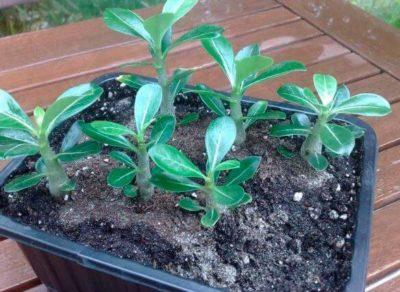

Fertilizer is applied only during the period of active development. Organic fertilizers based on pigeon or chicken manure are used, as well as complex mineral fertilizers (Monophosphate, Kemira).
Young plants (up to 3 years old) are fed with fertilizers with a large amount of nitrogen, old ones - with a small amount.
If the plant is healthy and the conditions are optimal, mineral fertilizers are used once a week (1/4 of the recommended concentration), organic fertilizers - once every 3-4 weeks (also 1/4).
In other cases, top dressing - once a month in the same amount. An hour before feeding, the plant is watered and sprayed. Fertilizer should not get onto the ground parts of the plant. Foliar dressing is rarely used, with an obvious deficiency of trace elements. Pruning.
For young plants, starting from 3 months and up to 3 years, it is better to pinch, i.e. removal of 2-3 centimeters of the top or branches from the side. Before pruning, adenium is washed in warm clean water, the cut is made at a distance of 1-1.5 cm from the caudex.
The diseased parts of the plant are removed to healthy tissue, and the cutting tool is disinfected in alcohol. The copious secretion of juice will stop after 1-2 days. The minimum pruning height is 10 centimeters above the soil. Very thin shoots that have come out after pruning are plucked out.
Crooked, soft stems rubbing against each other are also removed. To stimulate growth, you can remove and too thick. The hemp should not remain after pruning. The cut site is dried in the air for several minutes and smeared with garden varnish, a special balm or paste. The lack of putty is not critical, but may affect the healing of the slices.
Keep pets and babies away from the plant to avoid getting the juice in the eyes or mouth.
Pruning and pinching during dormancy (winter and autumn) are not done. Suitable months are March-April, at the same time as the plant is transplanted.
Special additives
Special additives include various long-acting fertilizers that can be applied at the time of soil preparation. This is especially true for initially nutrient-poor mixtures of substrates.
Orgavit
There are different types, but the horse is best suited.It is a dry, completely sterile granules of manure, practically devoid of unpleasant odor. From them you can prepare a liquid form for irrigation. But we are interested in it as an additive to the soil. Orgavit is a good option to make the “empty” substrate more nutritious.
| And so the packaging |
Biohumus
In fact, it is the result of the processing of manure by a special earthworm "prospector", aka red Californian. This substrate can be considered an analogue of manure or black soil. It contains a large amount of humic acids. It is also an excellent source of easily digestible organic fertilizer.
To put it simply, the worm ate the manure and made it even more useful for plants, moreover, it neutralized it from all parasites, weeds and other things. Perfect as an additive to create nutritious soil.
| The purchased product is often a mixture with peat soil |
Osmokot
Outwardly, they look like yellow balls with multi-colored inclusions. But in fact, this is a granular mineral fertilizer with a delayed action. It is so smart that it independently decides when and how much plants need.
The granules are covered with a membrane shell, which gradually collapses with each watering. This contributes to the even release of micro and macro elements inside.
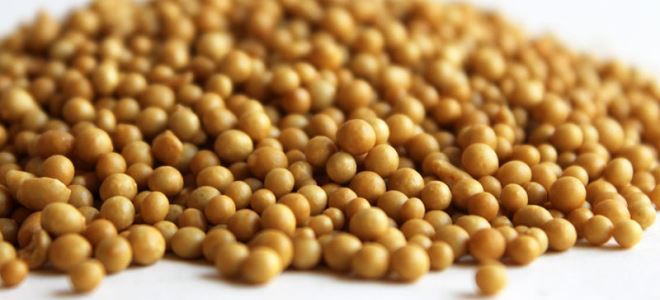

If you are not very fond of applying liquid fertilizers and constantly forget about them, then feel free to add Osmocote to your soil.
Various analogues appear on the market, but so far they are significantly inferior to the original.


What if refuses to give buds?
The lack of flowering in the fifth year of the plant's life indicates that the recommendations for care have been violated. Why isn't the plant blooming? Possible reasons:
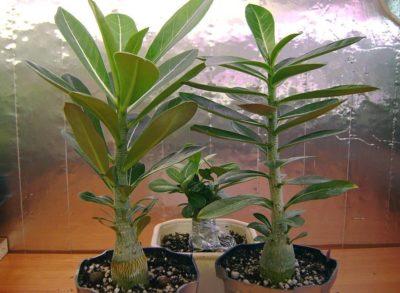

Lack of light. The restriction applies only to weakened individuals and dive seedlings.- Low temperature.
- Incorrectly selected planting pot (a large pot causes active root growth and there is not enough strength for flowering).
- Formative pruning has not been performed.
- The plant is overfeeding, as a result of which it builds up excessive foliage and depletes the root system.
- Incorrect watering regime or excessively cold water.
- Another plant was planted in the flowerpot. Adenium does not like neighbors nearby.
- Heredity - surprising as it sounds, but in some plants it also has an impact. If pollination was between early blooming “parents”, then their child, which sprouted from the resulting seeds, will bloom early too.
Inaccuracies in care leading to a lack of flowering
The reasons leading to the lack of flowering of adenium include errors in care - non-observance of feeding regimes, a dormant period, as well as an obligatory component of the content of a succulent - pruning the crown.
Excess nitrogen fertilizers
Overfeeding with fertilizers containing a high percentage of nitrogen is primarily related to errors in care. The plant "fattens", increases the lush aerial part to the detriment of the formation of buds. A flower grower should remember this property of adenium and give preference to those fertilizers for succulents that contain a minimum of nitrogen.
Improper care during the winter rest period
The reason for refusing to bloom is also non-observance of the dormant period. For adenium, it occurs with a reduction in daylight hours, and care at this time for a flower requires a reduction in watering, lack of fertilizers, a decrease in the room temperature to 15 degrees, preferably not higher than this indicator, but not less than 12 degrees. In the event that the grower does not comply with these conditions, he may not wait for the spring flowering of the plant.
However, some adenium growers believe that stimulation of flowering is necessary for a flower, which consists in maintaining a low temperature and lack of watering.It is not uncommon for a plant to recover from such stress for a long time, shedding foliage or looking weakened for a long time with drooping leaves and soft caudex. You can make adenium bloom at home by competently following all the rules for caring for a flower that is at rest.
Cropping is not a mistake, but too drastic is the reason
Pruning, as an essential element of caring for adenium, can also be the reason why the plant does not bloom at the right time, if it is done radically, "under the stump". Adenium growers remember that a friendly flowering of a plant can only be achieved on young pagons of the current season. If there are few of them, respectively, few flowers are formed, therefore, at the beginning of spring, to stimulate the formation of more buds, the succulent is cut off or pinched off the tops.
However, if the need for rejuvenating pruning is ripe, as a result of which most of the crown is removed, flowering will have to be sacrificed. A similar situation arises when pruning the root system during the formation of the caudex. Until the plant recovers from all the manipulations and does not grow new roots and a young crown, it either blooms poorly, or does not form buds at all in the time soon after pruning.
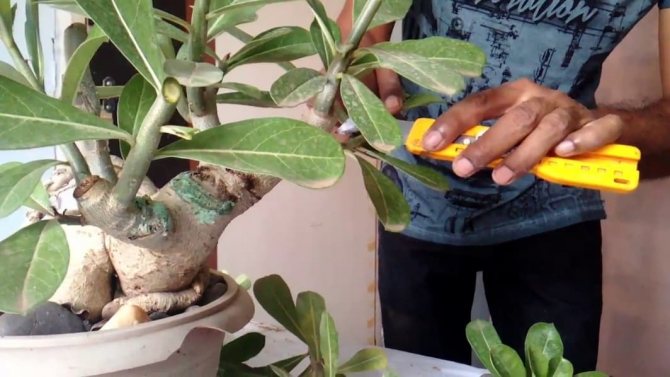

Transplant and crown formation
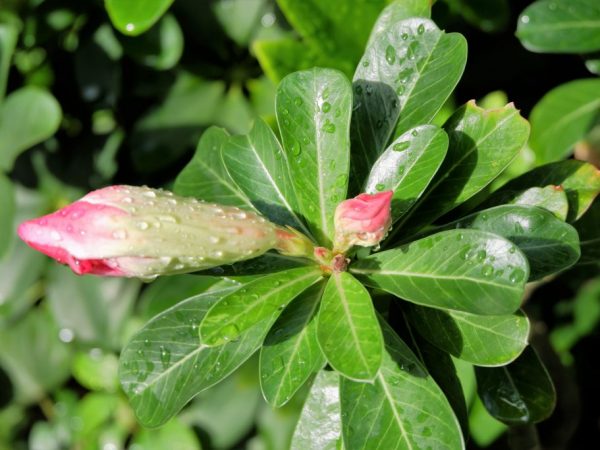

The flower needs a lot of space
It is important to transplant adenium in a timely manner.
For the first time - at the stage of cotyledonous leaves opening. This will allow the plant to quickly collect enough juices to form a characteristic crown.
Any large pot can act as a container for transplanting.
To save space, it is permissible to transplant sprouts into a single large bowl. But this will not contribute to their development.
The formation of the crown provokes the growth of new greenery. The procedure must be carried out using neat garden shears. After pruning, the succulent will bloom faster, and the flowering itself will last longer.
Attention! This flower grows with a single stem, and if you cut it too early, you can completely interrupt its development.
If the plant itself begins to branch out, it is better to remove the lateral processes that prevent it from germinating to the size of an adult.
In general, Adenium has special hormones right at the top of the plant called auxins - they suppress the appearance of side shoots. However, not all adeniums activate them on time, so pruning the succulent is as important as possible.
Briefly about the morphology of adenium
Indoor adenium attracts attention with its unusual structure. Flowering gives the plant a special charm, which is very much appreciated by flower growers. The thick trunk and fleshy roots serve as moisture-storing organs and attract the attention of florist designers.
The trunk has a distinct tendency to thicken at the root. While the upper part is narrower, a similar trunk structure is often observed in desert plants. It is called "bottle".
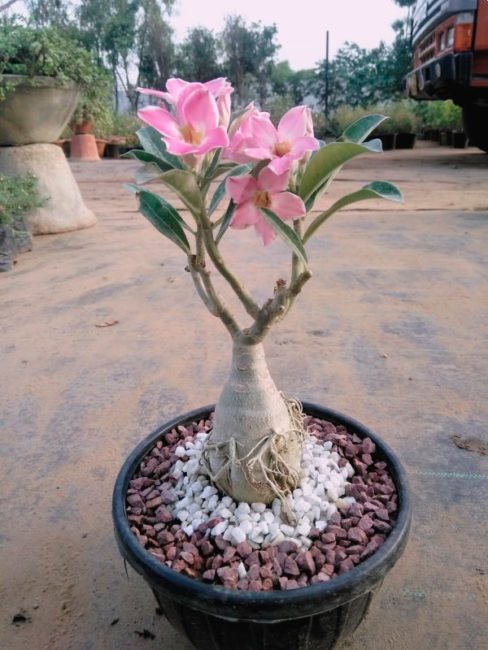

Adenium roots predominantly assimilate the upper layer of the substrate and also have the ability to store moisture. Often they come to the surface, which increases the decorative qualities of the exotic. The ventilation of the roots does not harm the plant at all. A similar structure of the root system is more common in adult specimens.
African exotic looks great as a bonsai. Florists often give its roots fancy shapes.
The unusual structure of the succulent fades into the background when its flowers bloom. Any blooming desert dweller enchants with the riot of colors of the fleeting African spring. The flowering of adenium is considered a natural phenomenon with proper agricultural technology. However, although growing exotic plants does not present any particular trouble, the plant may not bloom for a long time. This circumstance greatly worries novice florists.
What adenium seeds look like
The length of adenium seeds ranges from 8–10 mm to 15–18 mm.Outwardly, they look like light wrinkled cylinders, almost the same in diameter along the entire length of the seed, but there are also barely noticeable thickenings.
The flower grower, having received the planting material of adenium, is puzzled: where is the top of the seed, and where is the bottom? Which side to bury into the ground? The answer is simple - to lay it out sideways, so it is easiest for the sprout to germinate and appear above the surface of the soil mixture.
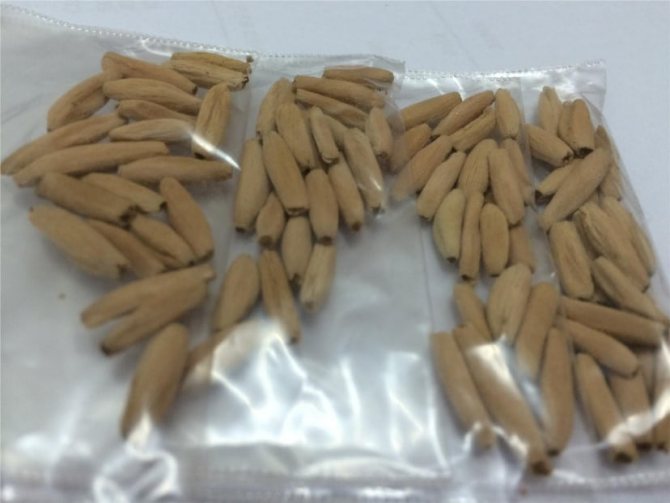

Species diversity
Distinctive features:
- Acquaintance with the exotic should begin with the study of its habitats in nature. It grows in the arid regions of the African continent, some species are found on the Arabian Peninsula and the islands of the Indian Ocean.
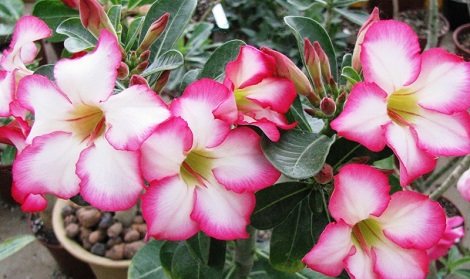

Multi-flowered view
- To survive in adverse conditions, the plant stores moisture in a thickened trunk.
- It does not have a clearly defined dormant period, therefore, under favorable conditions, the foliage does not completely discard.
Variety of species:
- Obessum ("thick") is a common houseplant among its fellows. It has a thickened stem (or caudex) that can store large amounts of water. Growing adenium from seeds is the most optimal and inexpensive way to find this species at home. Obessum pleases with flowering at 2-3 years of age. Breeders have bred several dozen varieties with simple, double and double flowers of various colors.
- The multi-flowered representative is distinguished by a lignified trunk and abundant flowering. It is characterized by a pronounced dormant period with the complete shedding of large foliage. In this state, the tree blooms so luxuriantly that you cannot see the branches. To achieve this result, the plant should be sent to a cool place during the dormant period.
- Boehmianum is characterized by a short summer growing season, foliage is covered only 3 months a year. It is he who is shown in the photo.
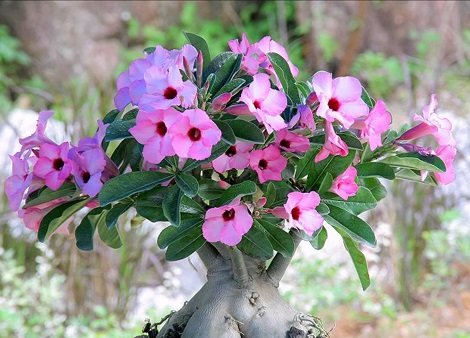

Boehmianum - Arabic is distinguished by its large trunk and powerful fleshy roots. It grows slowly, but forms large foliage. As a result of selection work, dwarf "Arabs" and specimens with an almost black color of the bark were obtained.
If adenium leaves turn yellow and fall
If the plant was under normal care and developed correctly, then under natural conditions this is the norm when the plant retires and its foliage falls off. The yellowing of the leaves occurs gradually, this process begins from the lower tier of the trunk.
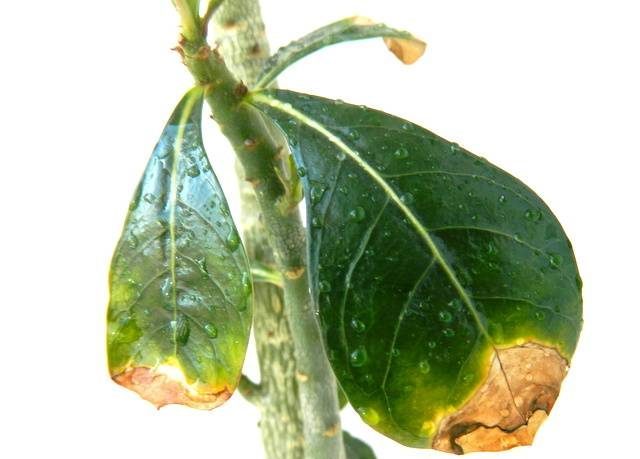

The leaf plate turns yellow, while the veins remain green. The plant can also shed all the deciduous parts for the winter. It all depends on the type of adenium. Typically, leaf fall, as in nature, occurs in the fall. At this time, the temperature in the room decreases, and there is no central heating yet. Consider the main reasons why adenium can turn yellow and shed foliage:
- Violations are observed in the root system, due to which the deciduous part is massively searched;
- Caudex (what is this?) Has become soft - this is a sure sign that the root has begun to rot. In this case, dig up the plant and dry it, then remove the area affected by rot with a sharp knife. Root the stalk;
- If the tips of a young seedling dry on the leaves, then this may happen due to a sharp change in air temperature. The temperature needs to be raised;
- The foliage turns yellow if an exotic plant is rarely watered. Watering should be moderate;
- The soil is incorrectly selected;
- Yellowness can appear due to an excess of fertilizer.
Now read:
- Choosing cucumbers for open ground according to your preferences
- Top 4 Best Asplenium Green House Ferns
- Exquisite junkus (sitnik) spiral in the interior
- Planting to decorate the site with three types of conifers
About
Agronomist of the state agricultural enterprise "Garovskoye" of the Khabarovsk region of the Khabarovsk region.
Features of seeds
The seeds of Adenium, known as the desert rose, do not look very viable. Their length is 1-1.5 cm, and visually they resemble rough sticks with hooks at the end and a light, gray-brown tone. Despite this, they sprout quickly.
Sprouts from such seeds - especially if they have been pretreated with a liquid to stimulate growth - grow and harden on the surface in literally a week and a half.
At the same time, Adenium has good germination, comparable to the germination of the most robust succulents. And you can improve it if you choose the right substrate, planting container and growing algorithms.
Graft
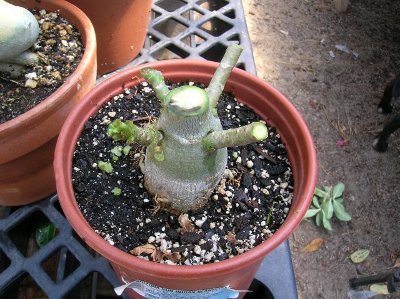

At the disposal of the florist two ways vaccinations:
- Flat
- V-shaped.
It is possible that the first vaccination option more rational and less traumatic for the plant.
Insofar as:
- no need to split the rootstock on the parent bush;
- the grafted stalk itself has not two, but one slice (flat);
- the cut of the cutting fits snugly against the stock.
In addition, the place of flat-grafting looks more aesthetically pleasing, with its help one "stump" you can graft cuttings from different bushes.
For the classic V-shaped grafting from the rootstock branch remove the apical part... The remaining stump is split, and a previously prepared cutting is inserted into the resulting gap, the lower edge of which is symmetrically cut off from two sides.
The vaccination site is strengthened with adhesive plaster, cloth, plastic tape. The auxiliary material is removed after successful accretion of the grafting material.
Mandatory conditions for successful vaccination in any way:
- rootstock and scion must be healthy;
- the scion must be at least one living kidney;
- the bush to be grafted and the plant that produced the cutting must to be growing;
- trimming the edges needs to be done disinfected instrument;
- the grafted plant needs to be kept in a comfortable environment;
- the junction must remain motionless.
For a flat scion:
- The rootstock branch should be larger diameterthan the scion (or the same).
- The ends of the plant to be joined must have even cut.
- After connecting the formed branch, carefully wrapped in polyethylene, and then securely fix the vaccine, using adhesive plaster, electrical tape.
Adenium, like any plant, can face various problems, diseases and pests. To avoid this, read our articles on pruning and caudex shaping rules.
Cuttings
Benefits:
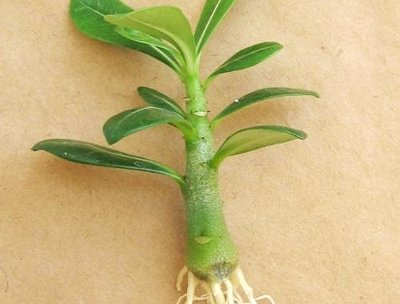

- The established stalk can please with flowering in the coming year (how to make adenium bloom at home?).
- The plant will become a clone of the parent and will keep the color and shape of flowers.
Disadvantages:
- Cuttings take root not always.
- In specimens grown from cuttings, sometimes difficult to form bulky caudex increased decorativeness (what are the conditions and methods of caudex formation?).
Material for grafting adenium by cuttings is obtained after pruning the parent bush (how to prune adenium at home?). It is more rational to take material from a plant at the beginning of summer, after the installation of stable warm weather - sufficient lighting and a warm atmosphere increase the percentage of plants taking root.
Adenium cuttings can be of any length, but the easiest 12 - 15 cm sticks take root with several leaves.
Not everyone solutions for early root formation can be used for adeniums. Therefore, it is better to let the cuttings dry in the air. minutes 30, and then gently stick it into the ground centimeters by 5 in depth, and then cover the container with a cover made of transparent polyethylene, half-liter plastic glass, glass jar.
Important care conditions behind the rooted cutting:
- The soil (2 tsp perlite with 1 tsp vermiculite or 2 tsp clean sand, 2 tsp sphagnum, 1 tsp perlite) should be stable slightly moist, but not wet;
- The plant should be provided with warmth (25–35 ° C) and light;
- Use any solutions with stimulants when watering it is impossible.
Propagation by cuttings in water
Cultivation of the root system in adenium cuttings is pure lottery.
With a probability of 50-70% the cut off branch may start to rot.
But in some flower growers, cuttings still give roots with this method of germination.
Rooting
How to root Adenium? For rooting, cuttings need from crescent to three... Twigs separated from the bush and planted in the ground in warm weather.
If the procedure is carried out in early spring or late autumn, outside a special greenhouse, then under a flowerpot with cuttings you need spread a rug with a heating function... Or place the container directly on the heating system line near the window.
How often, when does it bloom and how long does the process take?
When does this plant begin to bloom? Blossoming of a stone rose in greenhouses can be achieved in almost any period. At home, a healthy plant blooms from April to July and from September to October.... With good care, the flowering of adenium is long lasting, new buds can appear within five months.
The older the plant, the longer the flowering period. Seedlings obtained from seeds bloom at the age of two years, and some specimens - in the first year. It happens that the first flowering occurs only in the third or fourth year of the plant's life.
The time of the onset of the first flowering depends on factors such as:
- Growing conditions.
- View of adenium. The earliest flowering is miniature obesum adenium.
Germination errors
Some growers, even after several attempts, still fail to obtain young succulent seedlings from seeds.
There are several major mistakes made at different stages of growing that prevent a healthy young plant from being produced. The most common:
- Prolonged soaking of seeds. If the seeds are kept in water for more than 3 hours, they will "suffocate" and die.
- Planting seeds in peat tablets. Peat is highly acidic, which kills the seeds even before they germinate. An excessively humid environment is created in the peat soil, the seeds in it simply rot.
- Failure to comply with the temperature regime. For the first 2 weeks, it is necessary to provide the seeds with a constant temperature of + 28-32 ° C. Fluctuations in numbers, their sharp decrease or increase - all this affects their germination and survival.
- Early transplant. Sometimes flower growers are in a hurry to plant newly emerged seedlings so that they are "more spacious". For the first 1.5-2 months, the plants are unable to survive the change in location, soil and microclimate. Until 4-5 leaves appear, they should not be touched at all.
Soil mixture preparation options
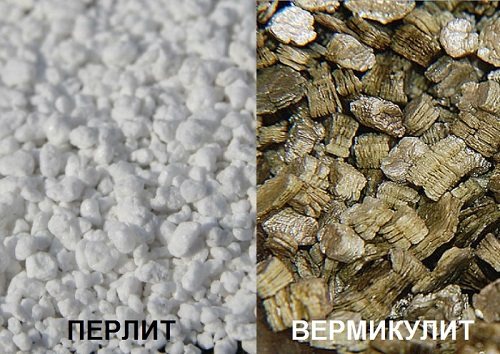

In the bases for the mixture, you can use a ready-made substrate for succulents, provided that a sufficient amount of baking powder is added to it. So, adenium grows well in soil consisting of the following components:
- 50% soil for cacti;
- 25% perlite;
- 15% vermiculite;
- 10% sand (river).
Florists often use peat-based soil:
- 50% peat;
- 30% garden land;
- 20% vermiculite or river sand.
Experienced florists, if possible, recommend using leafy soil collected under birches or lindens.
Video about the choice of soil for adenium
Capacity requirements
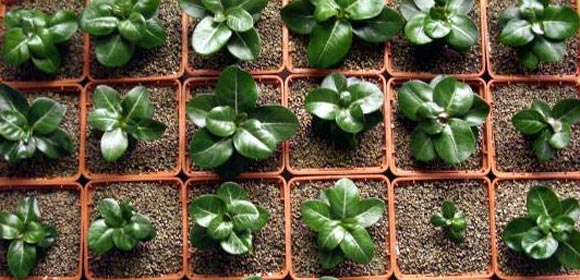

The capacity for planting adenium can be absolutely any. The main thing is the presence of many drainage holes so that excess moisture is removed. The best option is to grow adenium in a wide, low container. It will be a big advantage if the container has a lid, then this container will become a kind of miniature greenhouse.
At the bottom of the tank, drainage is laid out, consisting of polystyrene, expanded clay, bricks and fragments of coal.
When planting several varieties at once, cassettes are well suited.When the flowers are still young, it is preferable to plant them in deep pots, it is better to plant adult specimens not in deep, but wide containers. When using plastic pots, as well as clay, the earthen mixture must be selected correctly, as well as the irrigation scheme.
Indoor plant description
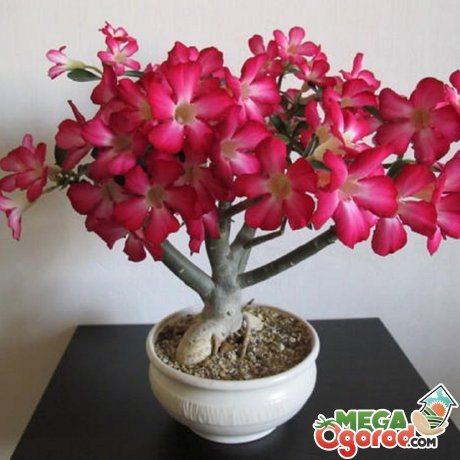

Adenium is an extraordinary plant. It is an insignificant tree that thickens from the base, rising upward in a cone. Its roots creep out, intertwine with each other, forming original plexuses and an extraordinary appearance. The crown of adenium has a bright green or deep dark shade, depending on the variety. When flowering, unusual bright inflorescences are revealed throughout the branches. Due to the active budding, the ornamental tree was nicknamed the Star of Sabinia, the Desert Rose, and the Impala Lily.
Adenium is a deciduous exotic tree.
Its pedigree goes back to the Kutrov dynasty. The first appearance of a non-standard plant is determined in several regions such as Thailand, North Africa and in some regions of Malaysia. In natural wild conditions, adenium is not a miniature indoor plant at all, not reaching even 60 cm, but a massive huge tree. In favorable conditions of tropical forests, it can grow in height from 3 meters to 10 m. The tree has a caudex - a strong thickening in the lower part of the trunk, which tapers towards the top, diverging in numerous branches.
Stems and branches are covered with bark, specific to the touch, grayish smooth structure. In some periods of growth, the shade of the outer cover can change to grayish-green to dark brown. The thickening of the trunk ends with several sturdy branches on which leathery, glossy leaves grow. Greens have a rich dark color. The leaf plates are attached to the branches with a small petiole.
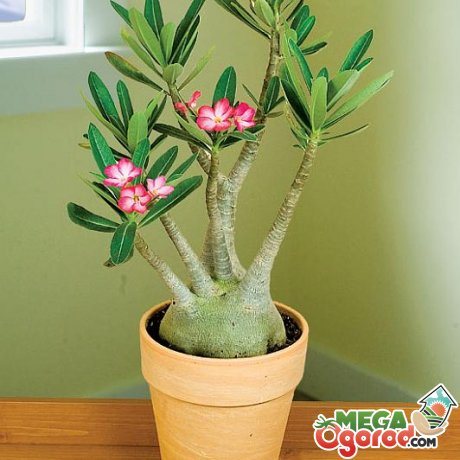

The leaf shape is presented in lanceolate or oval shape. The leaves are straight along the edge, ending in a sharp little end. Each leaf is bent towards the central part, and has the shape of a boat. The length of the plate is from 7 to 15 cm. The first flowering of adenium occurs at 2 years of age. The buds begin to develop in early June. Throughout the summer period, flowering occurs, old inflorescences die off and new ones form. The duration of the produced process ends at the end of September.
Various types of exotics differ not only in the diameter of the flowers, but also in the color of the petals. The size of the opened bud is 3-13 cm, and the colors vary from pink to yellow, from red to red-black, as well as white and peach colors.
There are some of the most popular types of adeniums:
- Obesum is the most common exotic tree in Russia. Flowering occurs in May, the diameter of the inflorescences is 7 cm. Flowers are presented in a pink or scarlet shade.
- Socotransky is a dwarf plant. It has gray leaves and pale pink, closer to a peach tone.
- Somali - flowering begins from the moment when the tree reaches 15 cm in height, and most importantly, it lasts all year long, continuously.
Arabic - the appearance of buds is recorded in May and lasts until the first days of October. The buds stand out in a bright pink tone. In winter, it completely loses all foliage and goes into hibernation until warm spring days.
Thus, adenium is a unique interesting plant that amazes with its types of flowers, appearance and structure. Good care provokes high-quality growth and long-term flowering of large inflorescences.
Diseases and pests, the fight against them
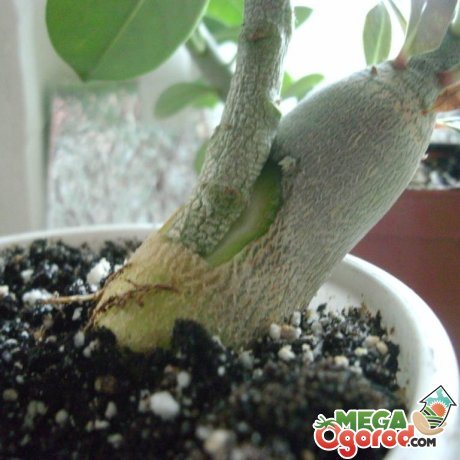

Due to the fact that the plant is poisonous, it is practically not affected by either diseases or pests. The invasion of parasitic insects is possible only with improper tree care.
In this case, the following pests can settle on the leaves and branches:
- Spider mite.
- Shield.
- Mealybug.
For preventive measures, spraying with a chemical insecticide should be applied once every 6 months. In addition, you can use a solution diluted with water and Actellic in order to disinfect the soil under the adenium. If the tree is periodically poured, then root rot may appear on the rhizomes. In this case, decay of rhizomes is observed, the acquisition of a yellow tint by the foliage and its fall from the branches. In order not to cause a similar situation, you should reduce watering and use light soil for planting.
If the plant begins to shed its foliage for no reason, this may indicate that a flowerpot is in the path of a draft.
To resume the normal state, you need to rearrange the flowerpot to a new place. The lack of flowering indicates incorrect pruning in the spring. More careful measures should be taken to eliminate unnecessary branches for more intense branching and the formation of flower buds.
Thus, adenium is a rather demanding succulent. He is used to being in hot climates and dry air. Therefore, the restructuring to high humidity and frequent watering affects him in an unfavorable way. It is recommended to follow all the rules of care and monitor the condition of the plant.
More information about the composition of the soil for a plant can be found in the video:
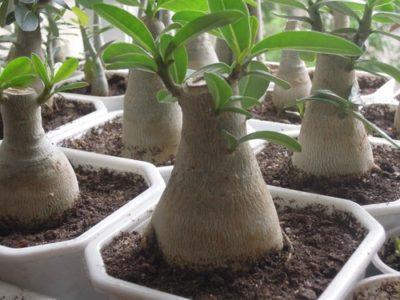

Adenium is an ornamental plant that is in great demand among flower growers around the world. And this is not surprising, since this exotic beauty pleases with long, lush flowering and ease of care.
Despite its luxurious appearance, the plant perfectly adapts to indoor conditions, blooms and multiplies for a long time. But such a result can be achieved only if the substrate is properly selected or prepared. Therefore, this article discusses in which land to plant this plant (we talked about how to properly transplant adenium here).
Photo
Below in the photo you can see what the seeds of the adenium plant look like.
What should the soil be made of?
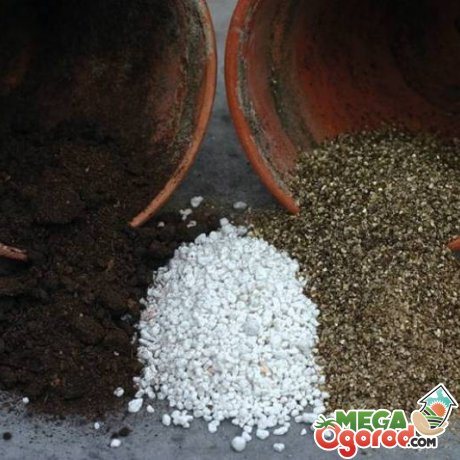

Soil for adenium is the main condition for the favorable growth and development of both the root system and trunk, as well as branches with flower buds. Watering, although it is one of the main means of caring for an exotic, is not enough if the tree is planted in the wrong soil.
It is recommended to take nutritious, loose and balanced soil.
The acidity for planting the plant should be at a neutral level. If you are buying a ready-made substrate for succulents in a specialized store, then you should carefully read the instructions on the package. If the acidity contains a pH of 5.8, then such a soil mixture is acidic. Otherwise, the elevated level - pH - 7 is alkaline. Neither option nor the second is suitable for growing an exotic plant.
Read also: Lamb back in the oven recipe
If you decide to independently prepare the soil for planting, you should choose one of the options for preparing the soil substrate:
- Option 1 - river sand (10%), perlite (25%), 505 soil for succulents, vermiculite (15%).
- Option 2 - peat (50% of the total batch), vermiculite, which can be replaced with river sand (20%) and garden simple leaf land (30%).
It is very important that the soil is loose, dense and heavy substrate, it is difficult for the nutrient moisture to pass through, and after that it dries out for a long period. At the same time, a sufficient amount of oxygen required for active growth does not penetrate into the soil. This negatively affects the succulent root system.
Adenium care immediately after transplant
The transplanted adeniums are placed in a moderately lit place under diffused rays of sunlight.If damaged roots were found during transplantation and they were removed, and the cut sites were dried and treated with charcoal, the plant is not watered for about a week.
If the weather outside the window is wet and cloudy, after transplanting for several days they do not water or moisturize very poorly. A plant with healthy roots begins to be watered after a couple of days, observing the usual moisturizing regime. However, in hot weather, the succulent needs moisture immediately after transplanting, otherwise the crown will begin to wither.
Fertilize the plant after transplanting a month later and use the usual scheme - once every 2 weeks with fertilizers for succulents, reducing the dose suggested by the manufacturer by half.


